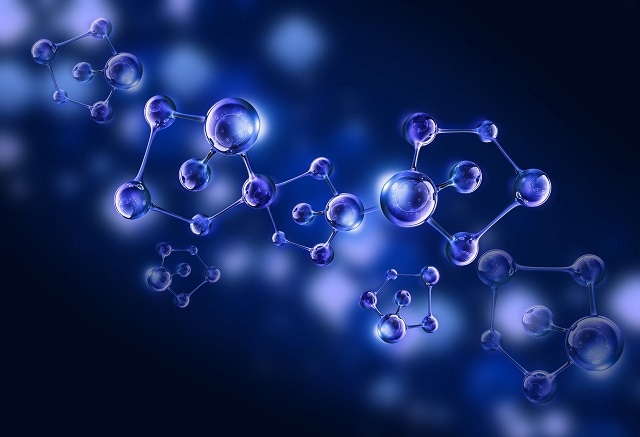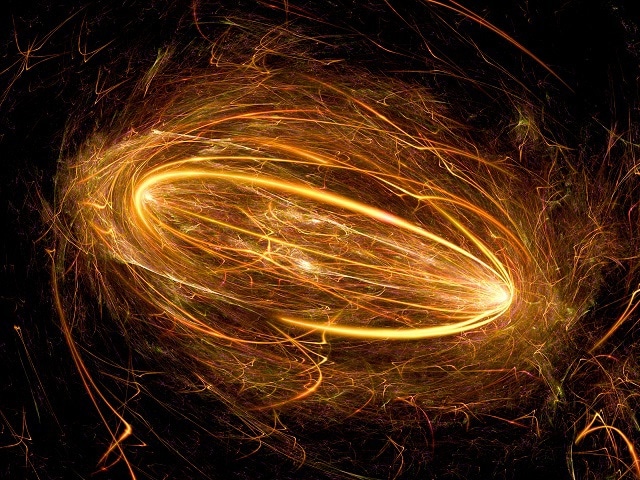
Image Credits: Vichy Deal/shutterstock.com
The mass spectrometer allows scientists to study and examine the composition of molecules at small scales in a way that was never before possible. Mass spectrometry is revolutionising the scientific understanding of matter allowing for breakthroughs in the fields of astronomy, biology, material science and medicine.
The Inner Workings of a Mass Spectrometer
The basic mass spectrometer has five main components:
- a vacuum chamber
- a way to ionise the material being examined
- an electric field to accelerate the ionised material
- a magnetic field bending and separating the ionised materials’ paths
- an electrical detector to measure the results of the process
Each of these parts plays its own role in the process of mass spectrometry and although each mass spectrometer has its own variations on these parts, they all largely perform the same actions on the material being investigated.
The Vacuum Chamber
The vacuum chamber’s purpose is arguably the simplest of all of the parts within the mass spectrometer. It is designed to keep the device and the material within the device free from external forces.
If the material were to be contaminated with other foreign particles from the outside world, the results could be unusable as the mass spectrometer could potentially perform the process on these particles in addition to the material being studied.
It’s even possible that these foreign particles could exert a force upon the ionised material affecting its separation and giving inaccurate results. Therefore it is vitally important to keep the vacuum chamber secure throughout the operation of a mass spectrometer.
The Ionisation Source
Mass spectrometers then require some sort of way to ionise the material, generally referred to as an ion source or ionisation source.
An ion is simply a charged atom or molecule due to the sum of the positive charges (the sum of the proton charges) not being equal to the sum of the negative charges (the sum of the electron charges).
Thus ion sources can be split into two main categories:
- those that produce cations, atoms or molecules with a positive net charge
- those that produce anions, atoms or molecules with a negative net charge
The most commonly used ionisation source is a beam of electrons which bombards the substance with electrons in order to give the atoms within the substance a net charge.
The Electric Field
These net charged atoms are then acted upon by the electrical field which is essentially just an electrically charged region between two electric plates.

Image Credits: sakkmesterke/shutterstock.com
Due to the interactions of the electrically charged field and the now electrically charged particles, the particles are accelerated forward away from the ionisation source and towards the magnetic field and the electrical detector.
As a result of the varying net charges of the ions the electric field will cause ions to accelerate at different rates as it applies more or less force to greater or smaller charges respectively.
In this way, the ions begin to separate based off of the charge they carry. The components of the molecule being studied are beginning to separate.
The Magnetic Field
The charged accelerated particles then enter into the magnetic field. This magnetic field, created by the two poles of a magnet, then changes the path of these particles.
The larger heavier more negatively charged particles will bend less than the smaller lighter more positively charged particles. In other words each ion’s path is bent based off of its charge and mass. This results in a spectrum of sorts much like a white light that gets separated into different colours after going through a prism.
The Electrical Detector
These now separated ions flow to the electrical detector which detects the number of ions for each mass or charge. By looking at the spectrograph, the reading from the electrical detector, scientists are able to use the distribution of these ions to discern the composition of the original material.
Mass Spectrometry Application Areas
The application of mass spectrometry are widespread due to the need to discern composition of foreign materials in so many different fields of science.
Material Science
For example, mass spectrometry is used on materials found in crime scenes to determine what composes the material. It is also used by material scientists, metallurgists and researchers to search for the impurities of the metals and materials they are creating and researching.
Astronomy and Astrophysics
A version of mass spectrometers are also used widely in the study of stars and stellar objects. Scientists can use the light given off by stellar objects as an already ionised material and put this light through through a diffraction grating.
The diffraction grating separates the light from a stellar object into the wavelengths, intensities and colors that make it up.

Image Credits: Rueangrit Srisuk/shutterstock.com
In this way diffraction grating works similarly to the magnetic field in other mass spectrometers. This separated light can be used to determine the elements of the atoms that are producing the light and so it is used to determine the elements that a star are composed of.
Biology
In biological research previously impossible studies of the composition of protein molecules are now possible with the help of the mass spectrometer.
For example protein molecules which are involved in a large number of biological processes that transpire in our bodies are now being studied in a greater detail than ever before.
Due to the importance of proteins in biological processes the understanding of proteins is integral to the understanding of biology and with the mass spectrometers ability to analyse proteins a whole new area of study has been born.
This area of study, the study of protein structures and functions, is referred to as proteomics and is only possible due to the invention of the mass spectrometer.
Medical Research
In the medical field, recent research has looked into the possible applications of mass spectrometers in breathalysers. These breathalysers would send the materials of your breath into a mass spectrometer that would fully examine your breath for markers for diseases.
If proved reliable enough this technology could revolutionise the way we diagnose diseases within patients’ bodies. For example this technology is being researched as a method to detect lung cancer.
The Importance of Mass Spectrometry
The invention of mass spectrometry has revolutionised the way in which are able to study and understand matter and as such as revolutionised fields of science ranging from the study of the stars above us to the study of the life right here on earth.
Sources and Further Reading
Disclaimer: The views expressed here are those of the author expressed in their private capacity and do not necessarily represent the views of AZoM.com Limited T/A AZoNetwork the owner and operator of this website. This disclaimer forms part of the Terms and conditions of use of this website.